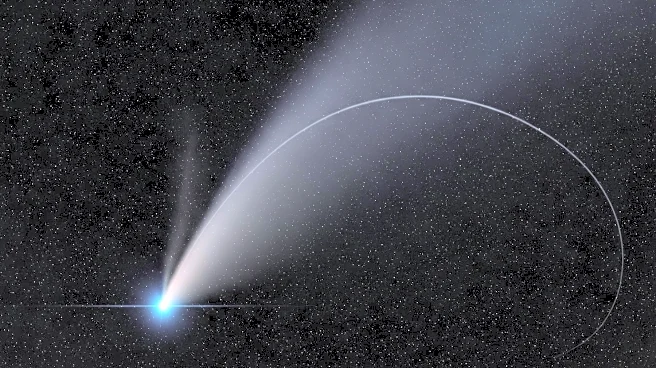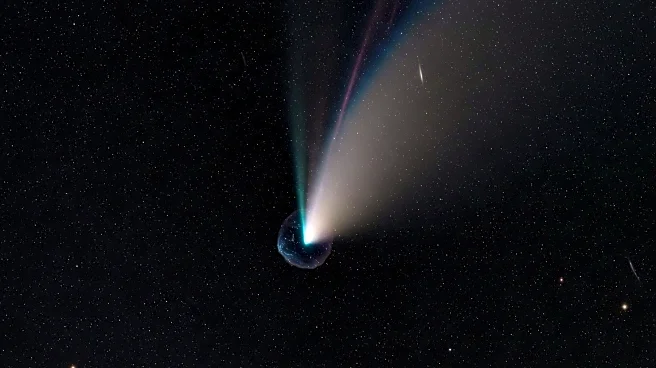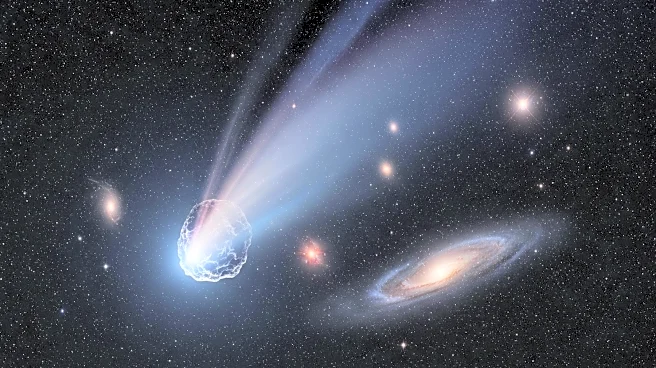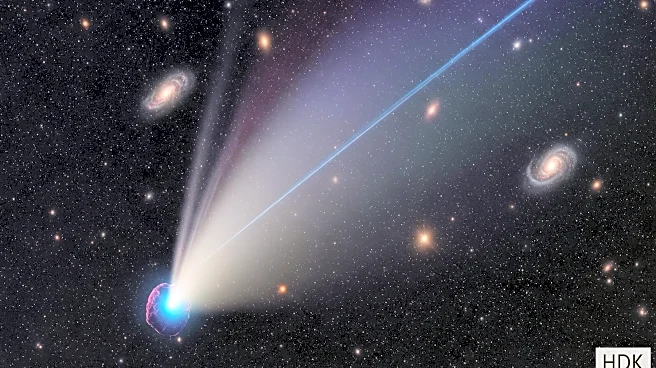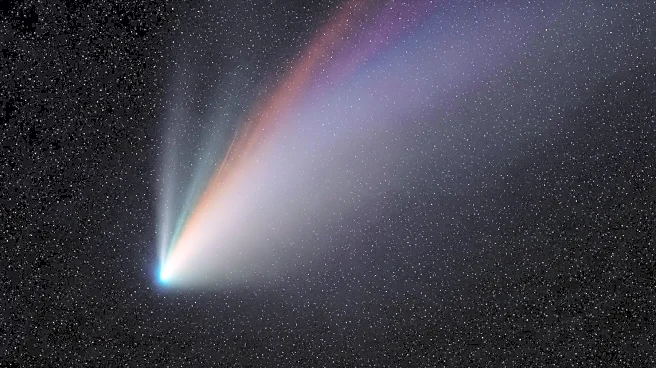What is the story about?
What's Happening?
Comet C/2025 A6 (Lemmon) is set to become a prominent astronomical object this fall, visible to the naked eye in October when it will be closest to Earth. Discovered by the Mount Lemmon Observatory in January 2025, the comet initially appeared as an asteroid but was later identified as a comet with a nucleus diameter of 2.2 km. Its brightness has increased significantly, making it a subject of interest for astronomers and skywatchers. The comet's orbit is inclined at an angle of 144° to the plane of the ecliptic, and it is expected to pass at a minimum distance of 0.6 AU from Earth on October 21.
Why It's Important?
The visibility of Comet C/2025 A6 (Lemmon) provides a unique opportunity for both professional astronomers and amateur skywatchers to observe a celestial event. Such comets offer insights into the composition and behavior of these ancient celestial bodies, contributing to our understanding of the solar system's formation and evolution. The comet's unexpected brightness also highlights the dynamic nature of these objects and the challenges in predicting their behavior.
What's Next?
Observers in the Northern Hemisphere will have the best opportunity to view the comet as it moves through various constellations. The comet will pass its perihelion on November 8, after which it will become visible in the Southern Hemisphere. Astronomers will continue to monitor its brightness and trajectory, providing updates and guidance for optimal viewing conditions. The data collected during this period will be valuable for future studies of cometary behavior and characteristics.
AI Generated Content
Do you find this article useful?
